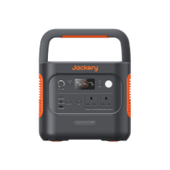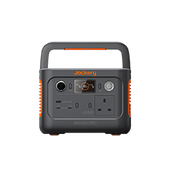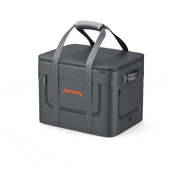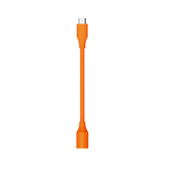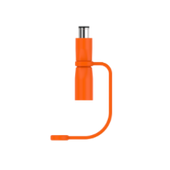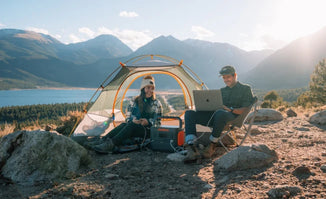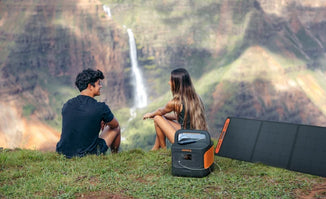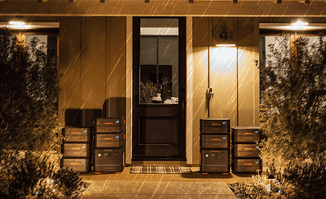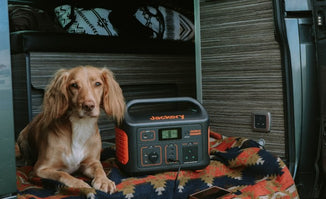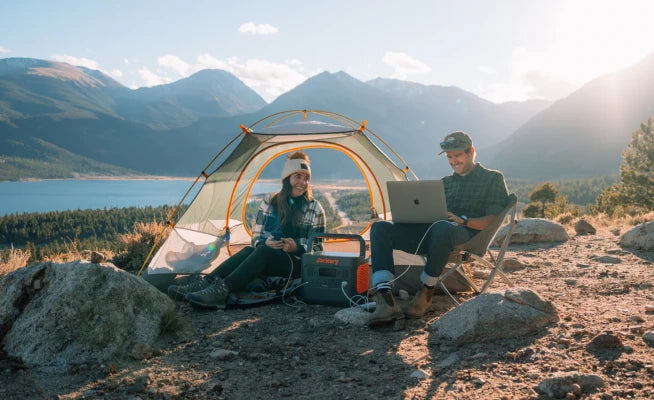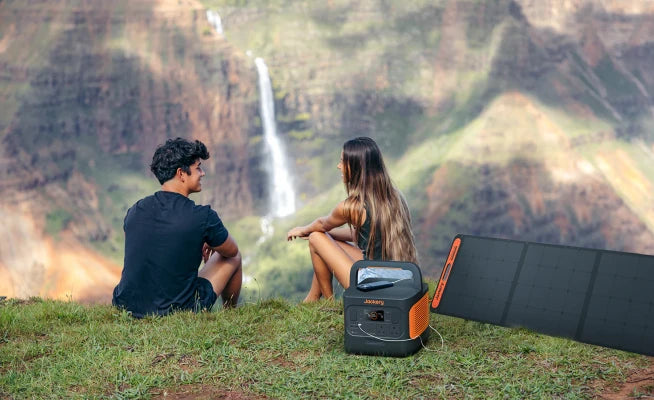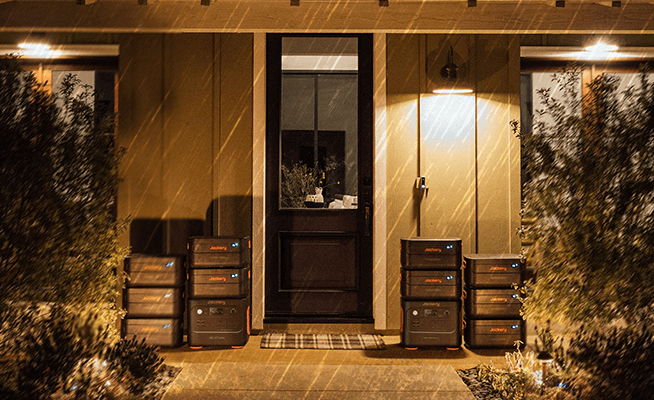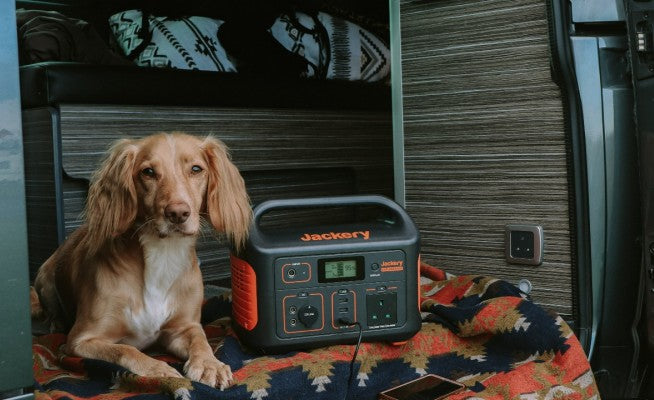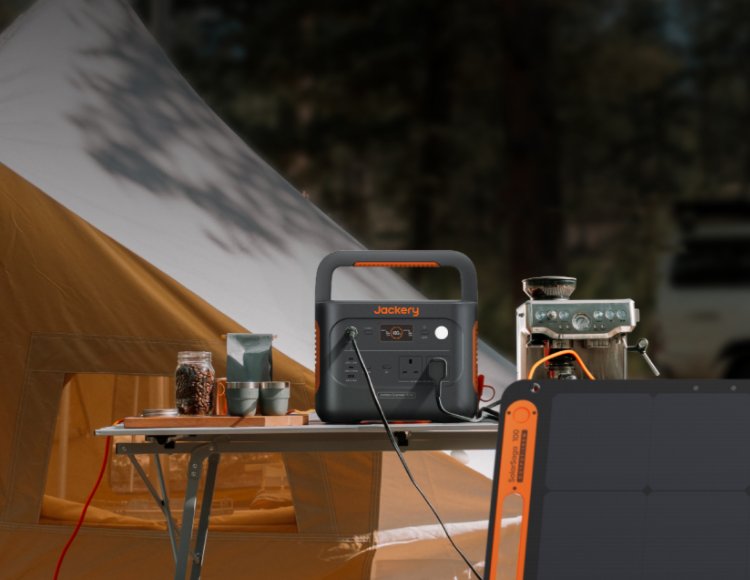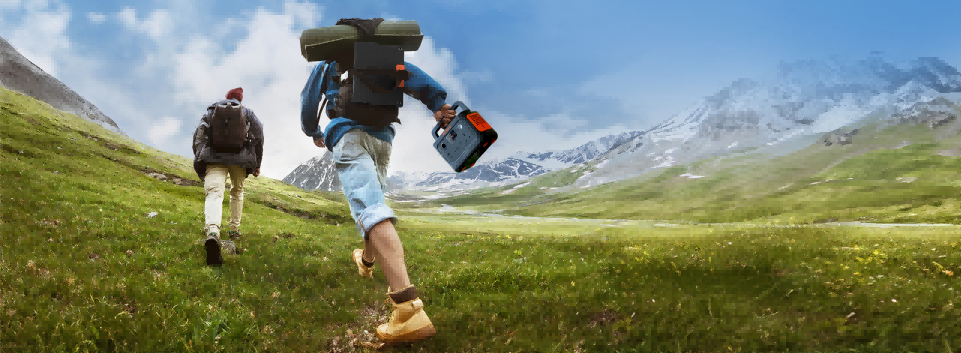Wild camping in the Lake District is an excellent option to immerse yourself in nature's grandeur while avoiding crowded campsites. Although wild camping is not legal without landowner permission, many secluded sites welcome quiet, conscientious campers.
This detailed guide outlines wild camping, legal considerations, and the finest places to pitch your tent amid the Lake District's breathtaking fells. You'll also find important gear recommendations, including portable power stations like the Jackery Explore 1000 v2, as well as expert ideas for camping safely and responsibly. Whether you're a first-time camper or an experienced one, this guide will get you ready for your Lake District adventure.
Key Takeaways: |
- Wild camping in the Lake District is permitted only with the landowner's permission, but it is often tolerated in remote areas when done responsibly. - Popular wild camping spots include Sprinkling Tarn, Codale Tarn, Holme Fell, Lingmoor Fell, Haystacks, Ennerdale Valley, Red Tarn, and Great Gable. - Choose a flat, durable ground area for pitching your tent away from paths, water sources, and farms. - Plan for sudden weather changes common in the Lake District and carry navigation tools such as maps and GPS devices. - It is essential to obtain a reliable power source when wild camping. We recommend Jackery Explore 1000 v2 to power your camping appliances off the grid. |
What Is Wild Camping?
Wild camping is the practice of camping outside of conventional campsites, typically in more isolated, natural settings such as hillsides, valleys, or lakeshores. It is frequently associated with a desire to immerse oneself in nature, away from the people and amenities of structured campgrounds. In the United Kingdom, and notably in the Lake District, wild camping often entails pitching your tent late in the day, leaving no trace, and leaving early the next morning.
This low-impact camping approach is popular among hikers and explorers who wish to experience nature in its purest form. In the Lake District, camping at high elevations, such as mountain peaks or besides tarns, is more common than in valleys or along roads. The goal is to maintain a low profile, not disturb wildlife or other tourists, and respect the natural beauty of the terrain.
Wild camping is not only about where you sleep but also about how you do it. Those who love wild camping in the Lake District are asked to practice "leave no trace," which includes disposing of all rubbish, avoiding open fires, and keeping groups small. A lightweight tent, minimum supplies, and careful planning are required to keep safe and protect the environment.
Can You Wild Camp in the Lake District?
If you are wondering whether you can wild camp in the Lake District, the answer is yes and no. Wild camping is theoretically illegal in England without the permission of the landowner, which includes the Lake District.
However, when done responsibly and away from densely populated places, it is generally acceptable. The Lake District is largely privately owned ground. Thus, camping requires permission. However, many people do so discreetly in highland places without creating disruption.
Wild camping in the Lake District is generally acceptable when done in the genuine spirit of the activity—quiet, isolated, respectful, and leaving no trace. This usually entails camping high in the fells, arriving late, leaving early, staying only one night, and leaving no trace behind. Camping is not permitted on lakeshores, car parks, roadsides, or in lowland regions and may result in enforcement action.
Authorities have become stricter in response to an increase in antisocial camping activity, including littering, property destruction, and fires. As a result, it is critical to adhere to explicit wild camping rules in order to protect the landscape for all.
So, can you wild camp in the Lake District? Yes—but only if done with care, respect, and awareness of the legal and environmental considerations. This includes:
No fires or barbecues due to the risk of wildfires
No camping in groups or in view of paths, homes, or roads
Always take all litter and waste with you
Stay only one night and be ready to move on if requested
Respect the Countryside Code and practice Leave No Trace principles
How to Choose a Wild Camping Spot?
If you're wondering how to find a wild camping place or whether you can wild camp in the Lake District, the answer is mainly dependent on where and how you do it. Choosing an appropriate wild camping spot is crucial not only for your own safety and enjoyment but also for preserving the natural environment and respecting the unwritten rules of wild camping.

Stick to Remote, Upland Locations
The best wild camping locations in the Lake District are in lonely upland areas, up on the fells and far from highways, businesses, and crowded walking trails. Areas such as Eskdale, Langdale, and Borrowdale provide access to remote hills, valleys, and tarns perfect for unobtrusive camping. Experienced campers prefer high-elevation spots, such as Sprinkling Tarn, Angle Tarn, and Blackbeck Tarn, for their stunning views and relative isolation.
Camping high in the fells is preferable to lowland locations since it is less likely to disturb people, livestock, or property. Upland wild camping adheres to the low-impact principles that underpin ethical camping in the Lake District.
Avoid Inappropriate Locations
Lowland valleys, lakeshores, parking lots, roadside verges, farming, and woodland borders are not appropriate for wild camping. These places are more visible and frequently regulated, and camping there may result in complaints, fines, or removal. Camping in such areas also raises the possibility of harming delicate ecosystems and disrupting wildlife.
In recent years, increased reports of antisocial activity, such as littering, open fires, and noise, have led to tighter regulations in the Lake District. That is why it is critical to select your wild camping location with caution and responsibility.
Follow the Wild Camping Principles
When wild camping in the Lake District, it is essential to follow rules that minimise your impact while preserving the delicate balance between access and conservation. To avoid drawing notice, always camp away from roads, homes, and popular pathways. Choose a flat, dry pitch in a secluded highland location, and keep your group small—single or two-person tents work best. Avoid camping too close to tarns or streams; staying at least 30 metres away protects delicate ecosystems while yet allowing you to appreciate the natural surroundings.
Being adaptable and respectful are also required when wild camping responsibly. Weather, ground conditions, or unexpected foot traffic may necessitate adjustments to your plans, so always have a backup plan. Most importantly, if a landowner or ranger requests you to move, please do so politely. By adhering to these basic standards, you can help protect the landscape and guarantee that wild camping is still a viable and rewarding way to experience the Lake District.
Plan Ahead and Be Flexible
Always check the weather forecast before choosing a wild camping location. Conditions in the Lake District can change quickly, particularly on the high falls. Keep a couple of alternate places in mind in case your original pick proves unsuitable due to wind, rain, or visibility.
Maps and internet tools can help you scout potential destinations before your journey. Experienced wild campers frequently use maps to locate secluded tarns and peaceful plateaus away from busy pathways.
Best Lake District Wild Camping Spots
If you're wondering if you may wild camp in the Lake District, the truth is that while official wild camping permit is limited, conscientious campers often use numerous remote upland areas. These areas provide breathtaking views, a true wilderness experience, and the opportunity to connect deeply with the Lake District's natural magnificence.

1. Sprinkling Tarn, Seathwaite Fell
Location: Seathwaite Fell, near Rosthwaite
Facilities: None—no toilets or designated pitches
Amenities: Fresh water from the tarn; flat camping spots; proximity to hiking routes like the Corridor Route
Official Website: https://www.lakedistrict.gov.uk/
Sprinkling Tarn is perched high on Seathwaite Fell, flanked by steep peaks such as Great End and the renowned Bowfell. This secluded alpine tarn is a favourite among wild campers seeking solitude and breathtaking vistas. The property features flat grassy areas ideal for tent pitching, easy access to fresh water from the tarn itself, and breathtaking sunsets mirrored across the water. Campers should come prepared for variable weather and limited facilities due to the altitude and remoteness.
2. Codale Tarn, Grasmere Common
Location: Grasmere Common
Facilities: None—wild and undeveloped
Amenities: Secluded setting with natural freshwater nearby; access to multiple hiking trails including Easedale and Tarn Hows
Official Website: https://www.lakedistrict.gov.uk/
Codale Tarn, located 468 metres up Grasmere Common, is a lonely beauty. The hike to the tarn is relatively difficult, leading hikers past picturesque waterfalls like Belles Knott, which enriches the experience. Codale Tarn offers a calm retreat away from the tourists, with grassy banks suitable for tents and a natural water supply nearby. It's ideal for campers seeking quiet and exploring local lakes such as Easedale Tarn.
3. Holme Fell, Coniston
Location: Near Coniston
Facilities: None—no formal camping infrastructure
Amenities: Swimming opportunities in the reservoir; woodland cover; scenic views of Coniston Water
Official Website: https://www.lakedistrict.gov.uk/
Holme Fell features mild ascents and is less popular than other areas of the Lake District, making it an ideal destination for campers seeking a quiet setting. The neighbourhood overlooks Coniston Water and features a small, historic reservoir renowned for its wild swimming opportunities. The topography comprises moorland and scattered woods, which provide cover for tents and other equipment. Hikers can visit neighbouring sights such as the Hodge Close Quarry, which adds an adventure element to their excursion.
4. Lingmoor Fell, Ambleside
Location: Near Ambleside
Facilities: None—wild and natural terrain
Amenities: Outstanding views over Great Langdale; less crowded trails; good for those wanting both wilderness and town access
Official Website: https://www.lakedistrict.gov.uk/
Lingmoor Fell offers stunning panoramic views of Great Langdale and its nearby falls. It's accessible from Ambleside, allowing campers to enjoy the convenience of a local town while also experiencing the tranquillity of wild camping. The fall is littered with isolated tent pitching areas, many of which are above the tree line, providing campers with a sense of seclusion as well as outstanding sunrise and sunset views.
5. Haystacks, Buttermere Valley
Location: Buttermere Valley
Facilities: None—no toilets or water taps
Amenities: Flat and sheltered camping spots; proximity to scenic tarns and walking routes; dramatic mountain views
Official Website: https://www.visitlakedistrict.com/
Haystacks is one of the Lake District's most famous fells, with a reasonably level summit plateau and spectacular tarns such as Innominate Tarn and Blackbeck Tarn nearby. This makes it a popular alternative for wild camping despite its popularity during the daytime. The landscape offers plenty of level ground for tent setup and wind cover in rocky outcrops. Campers can enjoy breathtaking 360-degree vistas, particularly at sunrise and sunset.

6. Ennerdale Valley
Location: Ennerdale
Facilities: None—very basic and undeveloped
Amenities: Remote, quiet setting; excellent walking and wildlife spotting opportunities; unspoiled nature
Official Website: https://www.lakedistrict.gov.uk/
Ennerdale Valley is one of the most secluded and wild areas of the Lake District. Its huge tracts of woodland and moorland give several areas away from pathways for wild camping. The valley is less developed and receives far fewer visitors than neighbouring regions, making it ideal for campers seeking tranquillity. Ennerdale is part of a conservation area that includes vast walking paths, rivers, and opportunities to explore the national park's untamed landscapes.
7. Red Tarn, Helvellyn
Location: Helvellyn
Facilities: None—no amenities or marked pitches
Amenities: Scenic high-altitude environment; access to Helvellyn summit trails; water source from the tarn
Official Website: https://www.lakedistrict.gov.uk/
Located beneath the summit of Helvellyn, Red Tarn provides a wonderful wild camping experience for anyone willing to walk to higher elevations. The tarn is a glacial lake encircled by granite crags, providing a picturesque backdrop with pure water and reflections of the towering fells. Campers can enjoy breathtaking views and easy access to Helvellyn's summit for sunrise or sunset walks, but they must be prepared for sudden changes in the weather.
8. Great Gable
Location: Near Wasdale Head
Facilities: None—highly remote and wild
Amenities: Spectacular panoramic views; challenging terrain suited for experienced campers; proximity to famous hiking routes such as the Wasdale Horseshoe
Official Website: https://www.visitlakedistrict.com/
Great Gable is a rough, renowned peak that attracts experienced hikers and campers. While not an official campsite, some sheltered areas on the summit and on the surrounding ridges can be used as wild camping sites for individuals who are prepared for tough terrain and unpredictable weather. The region provides expansive views of Wasdale and the Scafell range, making it an excellent choice for experienced wild campers.
Note: Wild camping in the Lake District is not officially permitted without the landowner's consent, but it is often tolerated in remote areas when campers are discreet, follow the Countryside Code, and camp responsibly for one night only. Leave No Trace principles are essential for protecting this beautiful environment.
What Equipment Do I Need for Wild Camping in the Lake District?
When preparing to wild camp in the Lake District, having the proper equipment is crucial for safety, comfort, and minimising your environmental impact. Because many wild camping areas lack infrastructure, you must be self-sufficient and prepared for changing weather and harsh terrain.

Shelter and Sleeping Gear
A lightweight, robust tent suitable for all weather situations is essential. The weather in the Lake District can change suddenly, so waterproof fabrics and a strong frame will keep you dry and sheltered from the elements. A decent-quality sleeping bag certified for low temperatures, as well as a sleeping mat to protect against the chilly ground, are essential for a comfortable night's sleep.
Cooking and Food Supplies
Cooking with compact camping stoves is advised, as open flames are generally forbidden to protect the environment. Bring plenty of lightweight, non-perishable food and water purification tools, such as filters or tablets, as potable water is not always available.
Power Station
Portable power stations, like the Jackery Explorer 1000 v2, are great for charging important equipment like phones, GPS devices, and flashlights. The Jackery Portable Power Stations are compact, reliable, and can charge multiple devices simultaneously. They are especially useful for long trips because they let you charge your equipment without relying on mains power. Their quiet operation and solar charging compatibility make them ideal for wild camping in remote areas, such as the Lake District.
Clothing and Footwear
Layered clothes appropriate for cold and damp weather are crucial. Waterproof jackets and pants, thermal base layers, and durable waterproof hiking boots will keep you warm and dry during your outdoor adventures.
Safety and Navigation
Always bring a detailed map of the Lake District, a compass, and, if feasible, a GPS gadget. First-aid kits, headlamps or torches, and emergency blankets are essential for safety. It's also a good idea to tell someone about your camping intentions and when you anticipate returning.
Additional Essentials
Other handy supplies are a multi-tool, biodegradable soap, a tiny shovel or trowel for digging catholes, and trash bags to dispose of all waste, leaving no trace on this lovely landscape.
Jackery Portable Power Station for Wild Camping
Wild camping in the Lake District offers incredible natural beauty and solitude, but it also means being completely off-grid. A Jackery Portable Power Station can be an excellent choice to meet your power needs in this environment.
Unlike traditional petrol generators, Jackery Portable Power Stations operate silently and produce no emissions. This is crucial for maintaining the tranquillity of the Scottish wilderness and respecting other campers and wildlife. Generators are generally frowned upon for wild camping due to their noise and fumes.
Jackery Portable Power Stations, especially when paired with Jackery Solar Panels, utilise renewable energy. This aligns perfectly with the "Leave No Trace" principles of wild camping in Scotland, minimising your environmental impact. Here, we recommend Jackery Explorer 1000 v2 for your wild camping.
Jackery Explorer 1000 v2
Wild camping in the Lake District has its own specific nuances and regulations. This makes the Jackery Explorer 1000 v2 an excellent choice, as its features align well with both the general needs of wild camping and the particular considerations of the Lake District.

Silence and No Fumes: The Lake District National Park explicitly emphasises "Leave No Trace" and respecting the environment. Traditional generators are completely inappropriate due to their noise and fumes, which would disturb the peace and pollute the air. The Jackery Explorer 1000 v2 operates silently and produces zero emissions, aligning perfectly with this ethos.
No Fires/BBQs: The Lake District's wild camping guidelines strictly prohibit open fires and BBQs. The ability of the Jackery 1000 v2 to power small electric cooking appliances, such as a low-wattage kettle or a small electric stove, within its 1500W limit, can be a game-changer, allowing you to prepare warm food and drinks without violating fire rules.
Reliable Device Charging: The Lake District terrain can be challenging, and weather can change rapidly. Having charged phones (for emergency calls), GPS devices, and headlamps is absolutely critical for safety. The 1070Wh capacity of the Explorer 1000 v2 ensures you can keep these vital devices powered for multiple days.
Lightweight for its Capacity: Wild camping in the Lake District often means being "above the highest fell wall" (approximately 400m/1,200 ft high) and away from roads and popular areas. At around 23.8 lbs (10.8 kg), the Explorer 1000 v2 is significantly lighter and more compact than many power stations of similar capacity. This makes it more feasible to carry into those more remote, permitted wild camping spots.
① 1070Wh Capacity & 1500W Output: Powerful Power Output for your ultimate Outdoor Freedom
② Emergency Super Charging: Up to 7x Faster¹, Full Charge in as Fast as 1 Hour
③ Whisper-Quiet Operation Under 22dB² for Peace and Serenity
④ Ultra-Durable & Reliable LiFePO4 Battery for 4000 Cycles up to 10 years daily use
⑤ Exclusive ChargeShield 2.0™ Battery Technology: Multiple Reliable Certifications, 62 Layers of Protection
⑥ Reliable Power Anytime: UPS ≤20ms, Seamless Power Switching, IEC 62040 Certified
⑦ The Smallest and Lightest³ 1 kWh LFP Power Station: 18% smaller than the old version Explorer 1000 Certified
Tips for Wild Camping in the Lake District
Wild camping in the Lake District is a fantastic way to become acquainted with the breathtaking scenery of the region. However, to ensure your trip is both safe and enjoyable, it is essential to follow a few useful guidelines.

Tip 1: Respect the Countryside Code
Always camp responsibly by paying attention to the Countryside Code. Choose locations that are not close to roads, buildings, or farms, and make sure not to cause any damage to the environment or disturb wildlife. To avoid leaving an impression that you will stay, you should simply camp for one night and then move on.
Tip 2: Choose Your Spot Wisely
It is best to pitch your tent on a level, sturdy surface, preferably on grass or rock, rather than on moss or heather, which are more prone to damage. To conserve the environment and to ensure that others have privacy, you should avoid camping near water sources or walkways.
Tip 3: Leave No Trace
Remove all items you bring in, including garbage and leftover food scraps, and dispose of them properly. Utilise biodegradable goods and dispose of human waste properly by digging catholes at a distance of at least 30 metres from water sources and hiking trails. This helps to maintain the area's natural atmosphere and cleanliness for future visitors.
Tip 4: Plan for Weather
Prepare yourself for rain, wind, and cold weather, even in the summertime, in the Lake District, which is known for its unpredictable weather. It is essential to have waterproof gear, a sturdy shelter, and layered clothing to maintain a warm and dry environment.
Tip 5: Be Discreet and Considerate
In order to show respect for the wildlife and other campers, keep the noise levels low and use as little illumination as possible at night. Because open fires can cause lasting damage and are frequently restricted, campfires should be avoided unless they are in a designated area.
Tip 6: Check Local Guidance and Permissions
Before you go, be sure to check the most recent recommendations on the websites of the Lake District National Park and the National Trust. Even though it is normally acceptable to camp in the wild in distant regions, you should always make sure to get permission from the landowner wherever feasible and be aware of any seasonal limits.
FAQs
The following are the frequently asked questions about wild camping in the Lake District.
1. Where can I wild camp in the Lake District?
Wild camping in the Lake District is primarily available in distant, less-frequented regions, away from highways, farms, and buildings. While there is no official legal right to wild camp without permission, many campers prefer areas on open fall land or National Trust property where landowners permit safe wild camping. Popular destinations include the fells surrounding Sprinkling Tarn, Ennerdale Valley, and Haystacks. To minimise environmental impact, always obtain permission and camp discreetly for one night.
2. Is wild camping in the Lake District illegal?
Wild camping in the Lake District is normally not permitted without the landowner's consent, as the area is subject to English law, which does not guarantee a general right to wild camp. It is, however, frequently accepted in remote regions, provided it is done carefully, discreetly, and with minimal environmental harm. Campers should avoid sensitive areas and always adhere to the Countryside Code to prevent the risk of enforcement action.
3. Where can you legally wild camp in the UK?
Legal wild camping rights exist primarily in Scotland under the Land Reform Act 2003, which permits responsible wild camping on most open land. There is no automatic permission to wild camp in England and Wales, including the Lake District; however, some parts of Dartmoor National Park permit it. Otherwise, consent from the landowner is required. National parks and private estates may provide authorised wild camping spots and permits.
4. What happens if you get caught wild camping?
If you are caught wild camping without permission in prohibited places, landowners or park authorities may request that you leave. In some situations, enforcement authorities may issue a warning or fine, particularly if campers cause damage, trash, or refuse to evacuate. Persistent offenders may face legal punishment, although most enforcement focuses on educating and encouraging healthy camping habits.
Final Thoughts
Wild camping in the Lake District provides an unforgettable opportunity to reconnect with nature's raw beauty. Respecting local norms, adhering to Leave No Trace principles, and carefully selecting your location all help to safeguard this beautiful ecosystem for future generations to enjoy. Packing the correct gear—including dependable shelter, warm clothing, and portable power sources like Jackery Portable Power Stations—will make your trip safer and more comfortable. Remember, wild camping is about being discreet and responsible, staying for only one night, and leaving no trace.


